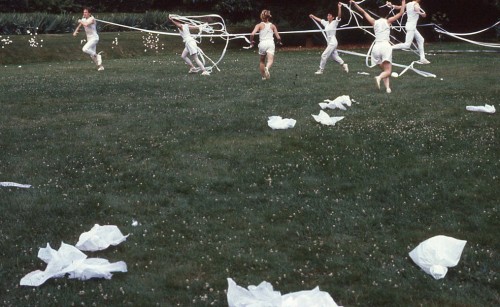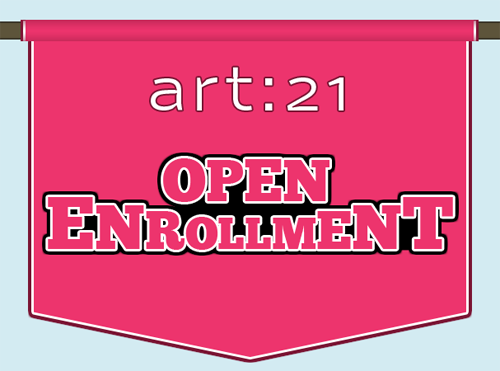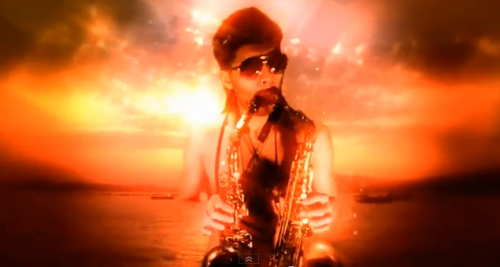I’m happy to report that I’m alive. I made it through my first conference presentation as part of The Now Museum Graduate Student Symposium last Sunday at the New Museum. The heavyweights (Terry Smith, Massimiliano Gioni, Annie Fletcher, Okwui Enwezor, Ute Meta Bauer, et al) were out to play for three days beforehand. In the presence of such giants, I was fully expecting to faint (no!) or vomit (please, no!) or vomit-then-faint (at least I’d end up unconscious) as I finally took my place at the podium. In the end, the only lasting effect was a slight loss of enamel (turns out, I’m a pre-game tooth grinder) and I was able to speak semi-coherently and, I hope, with some passion about my subject of artist-educators and hierarchies of “the contemporary.” Thanks, Professor Bishop and my fellow speakers, for a lot of moral support. It turned out to be, actually, kind of fun.

Rika Burnham and Artists Teaching Inc. performing at Wave Hill in the 1970s, a case study focus of my early PhD research.
In light of the public short shrift that the general teaching profession often experiences (Wisconsin being the current epicenter of this debate), I was excited to speak about artist-educators in museums. My paper at The Now Museum suggested that radical museum education practice of the last 40 years – I focused on just two artist-led case studies from the 1970s, Arts Awareness and Artists Teaching Inc. — offers important precedents for the recent history of contemporary art, the current proliferation of the terms “discursive practice” and “pedagogy,” and especially the current obsession with taking the rubrics of art education as art practice (BHQF), much like artists of Institutional Critique through New Institutionalism have taken exhibitionality as their essential point of departure.
In fact, Janelle’s superb article on the Bruce High Quality Foundation points in the direction of the next chapter of my research: #class, San Francisco’s Independent School and supposed “radical democratization” of art education. Critical histories of contemporary art (most recently, Curating and the Educational Turn) have bypassed museum education as a source of contemporaneity both inside and outside of institutions. It was my goal to suggest that “those who can” don’t always enter the museum space with their work in the format of an exhibition, as a curator, or “in a limousine painted as a school bus.”
A large influence for my thoughts came from a discussion I had last fall with artist and educator Pablo Helguera, current Head of Public Programs at MoMA in New York. I had been ruminating on the hype surrounding Tino Seghal’s This Progress at the Guggenheim earlier that year, and a subsequent paper I’d written deconstructing his method as “purloined pedagogy.” I asked Helguera to expand on his assessment of Relational Aesthetics and the discursive turn, something that many other artists who teach had begun to talk publicly about in light of Seghal’s work. In short, Helguera was direct in reframing Sehgal’s use of an open-ended question – “what is progress?” — less as “radical practice” and more of “an accident” that the artist’s method closely mirrored museum education inquiry techniques. In a blog post he wrote around the time of that show, Helguera asked, “can you keep a secret? … the work is not really a performance art piece, and not so much of an artwork either: it is an education program … but to say something is educational is the kiss of death in art.”
From Institutional Critique through the loose associations of New Institutionalism and Relational Aesthetics, the techniques artists like Seghal employ are frequently posed as radical artistic practice. Concurrently, perhaps due to its increasing professionalization, the role of museum education has been largely excised from institutional and scholarly histories of contemporary art while a theoretical and philosophical focus on “pedagogy” linked to the artist and curator has been forged within critical art histories. This reflects the hierarchical gap that often exists between curators and educators within the museum, and ignores the fact that artists working as museum educators are the historic instigators of techniques that actually go some way to democratizing the museum space (as opposed to the heroic male figure of Seghal who just reinforces the Guggenheim narrative of Kandinsky and Krens).
[youtube:https://www.youtube.com/watch?v=7yea4qSJMx4]
Hennessey Youngman breaks down Relational Aesthetics for us
It’s all in the framing, which is why I’ll leave the last word on the relevance of artists and audience engagement in Spring 2011 to Jayson Scott Musson, aka Hennessey Youngman. I’ve just begun to watch his Art Thoughtz video series on Post-Structuralism (“if you can’t make it, fake it by over-explaining it”), How to Be a Successful Artist, and his latest on Relational Aesthetics, which nods to Brian O’Doherty’s observations on the white cube, “sci-fi writer” Nicolas Bourriaud, and cherry-picks lines from Jerry Saltz’s infamous Art in America write-up of Tiravanija’s pad thai piece.
Youngman begins with the astute observation that “next to the readymade, Relational Art is, like, the easiest art to make … all you need is some eager people” and ends with Sexy Sax Man as his “real-er” epitome of the next generation of radical art practice. His is an education for us all, even if it’s NSFS (Not Safe for School).






Pingback: Michelle Millar Fisher